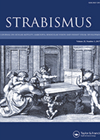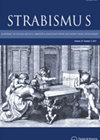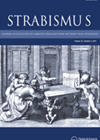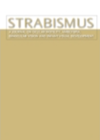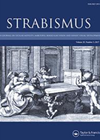
Journal Reviews
Genetic profiles of primary strabismus
The authors explore the pedigree analysis of familial cases of primary concomitant strabismus (PCS) to unravel the genetic determinants of this strabismus. Of 2301 cases of PCS, 39 (1.7%) had familial clustering. This study recruited 18 families with esotropia and...
Choroidal thickness in strabismus and amblyopia
The authors examined the effect of exotropia, esotropia, anisometropic amblyopia and hypermetropia on choroidal thickness in a prospective cross section study. The study included 100 patients and 20 controls with a mean age of 8.5±2.9 years; 61 female and 59...
IXT control vs. binocular summation
The purpose of this study was to evaluate the relationship of BS scores with other current markers used for evaluating the control in preoperative intermittent exotropia (IXT) patients. Data was collected on stereoacuity, angle of deviation, Newcastle control score (NCS),...
Stereo distance in XT
The test distance effect on stereoacuity was explored in a population with intermittent exotropia along with use of two types of stereograms with crossed and uncrossed disparity. At near and distance distances, the median for both disparities was 60”; 79%...
Lost muscle surgery
The authors present the results of transposition surgery without concomitant lateral rectus weakening in a retrospective review of five cases. Surgery was for large exotropia and marked limitation of adduction after surgical loss of the medial rectus muscle. Mean age...
Medial rectus surgery with development delay
The long-term results of bilateral medial rectus surgery are evaluated in 42 children with development delay. Mean age pre-surgery was 2.9 years with a mean follow-up of 4.6 years. Mean angle of esotropia was 44.29±13.9PD; 57% achieved surgical success; 31%...
Muscle insertion measurement by ultrasound biomicroscopy
The aim of this study was to evaluate the accuracy of ultrasound biomicroscopy (UBM) preoperatively and postoperatively in patients having primary horizontal muscle surgery. Sixteen eyes of 15 patients with concomitant horizontal strabismus were evaluated; mean age 21.1 ±3.3 years,...
BT for intermittent exotropia
This study aimed to evaluate the effect of botulinum toxin (BT) on the amount of deviation and fusional control state of intermittent exotropia. Twenty-one patients (five male and 16 female) aged five to 18 years with progression of exotropia were...

